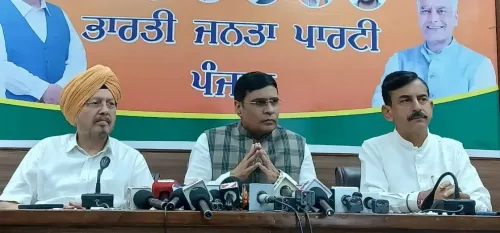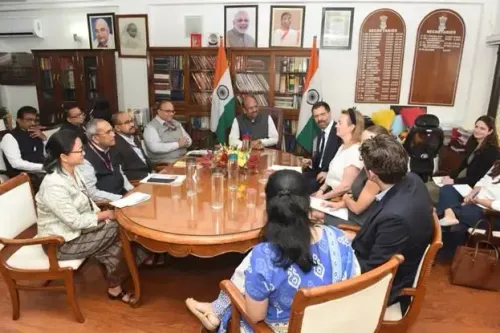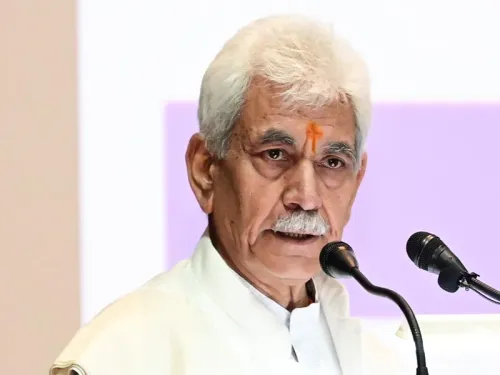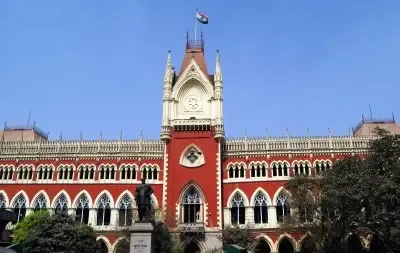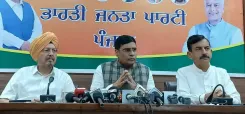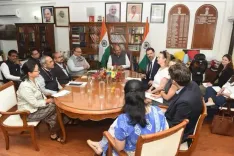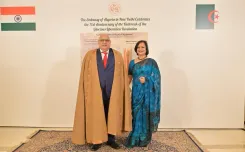How Did GST Reforms and Festivities Propel India's Auto Sales to a Record High in October?

Synopsis
Key Takeaways
- GST 2.0 reforms significantly boosted vehicle affordability.
- Record sales of 4.02 million units reflect strong consumer confidence.
- Two-wheelers achieved an all-time high with 31.5 lakh units sold.
- Rural markets emerged as a key growth driver.
- The 42-day festive season was crucial for sales increases.
New Delhi, Nov 7 (NationPress) The GST 2.0 reforms, a remarkable 42-day festive period, and a resurgence in rural markets culminated in extraordinary results for the automobile industry in October, achieving a total of 4.02 million units sold. This marks a significant increase of 40.5 percent compared to 2.87 million units during the same month last year, as reported by the Federation of Automobile Dealers Associations (FADA) on Friday.
Passenger vehicle (PV) sales reached 5.57 lakh units, reflecting an 11 percent growth, while two-wheelers experienced their highest monthly sales ever at 31.5 lakh units, a remarkable 52 percent increase year-on-year.
Commercial vehicles (CVs) saw a 17.7 percent year-over-year growth, fueled by increased freight activity, rural logistics, and an ongoing push for infrastructure development. The tractor segment also witnessed a growth of 14.2 percent.
“October will be etched in history as a pivotal month for India's auto retail sector. Overall retail sales surged by an impressive 40.5 percent year-on-year, with both passenger vehicles and two-wheelers reaching record highs, reflecting renewed consumer confidence and robust economic indicators,” said FADA President C.S. Vigneshwar.
Following a relatively quiet September, which was impacted by the transition to GST 2.0, October experienced a rapid recovery—almost akin to a hurdle race where pent-up demand seamlessly transitioned to festive enthusiasm and tax-cut excitement, driving sales to unprecedented levels, he noted.
The reduction in GST rates, particularly for entry-level two-wheelers and compact cars, enhanced affordability and encouraged first-time buyers.
Rural India emerged as a significant growth driver, supported by favorable monsoon conditions, increased farm incomes, and enhanced infrastructure spending. Dealers reported unprecedented inquiries and improved sales conversions; the inventory of passenger vehicles was adjusted by 5–7 days, according to the data.
The implementation of GST 2.0 was a game-changer, as the lower GST rates for small cars made vehicle ownership more accessible, particularly for cost-sensitive first-time buyers.
This boost in affordability coincided perfectly with the festive season, converting positive sentiment into tangible sales. A standout aspect of the month was the rise of Bharat.
“The 42-day festive season of 2025 represents a defining moment for India's auto retail, achieving the highest sales and growth across all categories. Overall vehicle retail surged by 21 percent year-on-year, validating the success of the Government's transformative GST 2.0 reforms—a reform that truly encapsulates the essence of Simpler Tax, Stronger Growth,” Vigneshwar stated.

